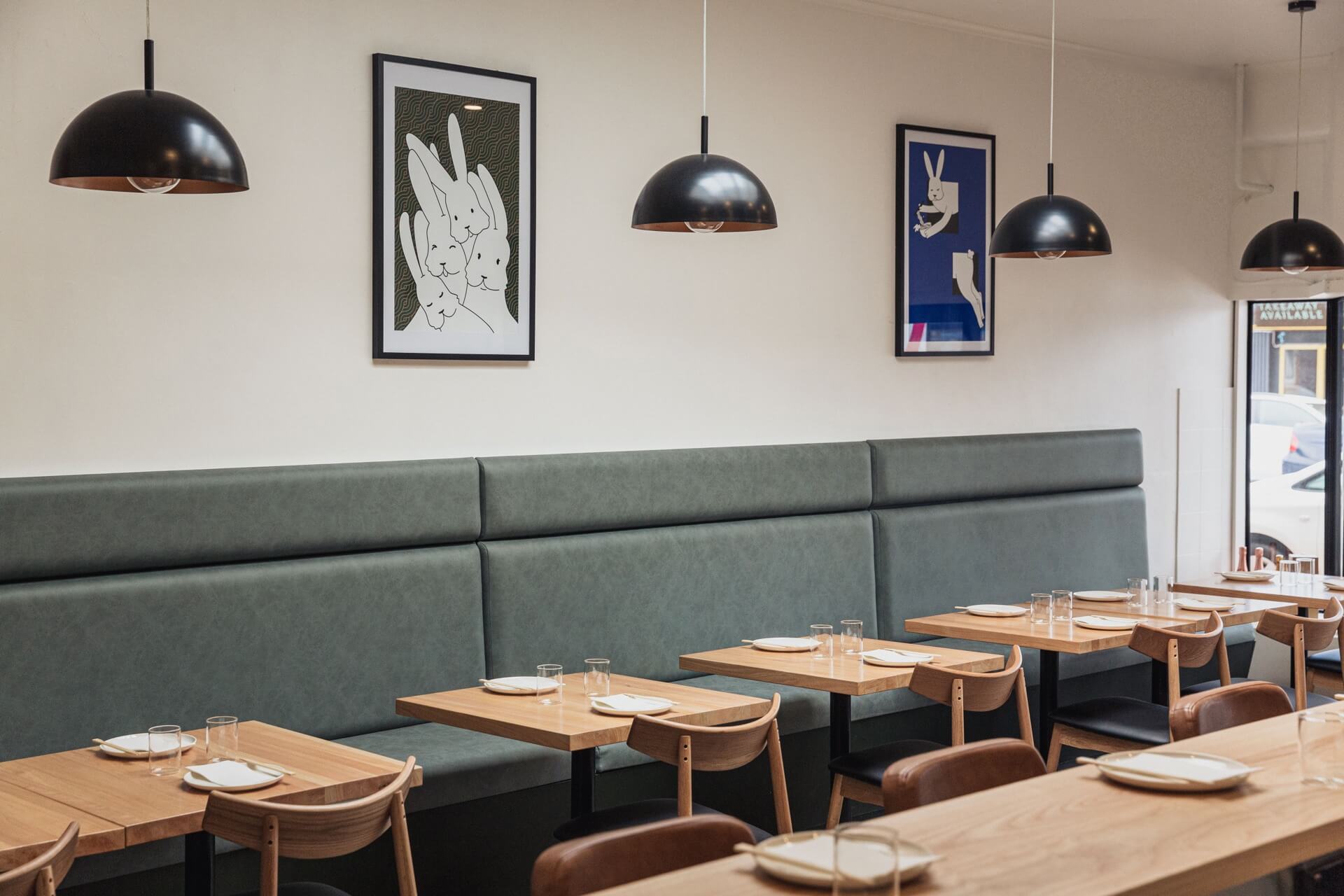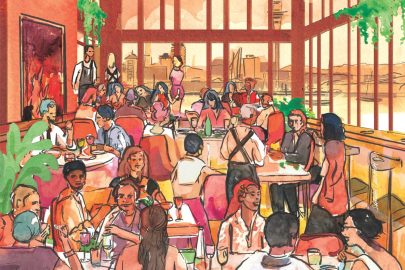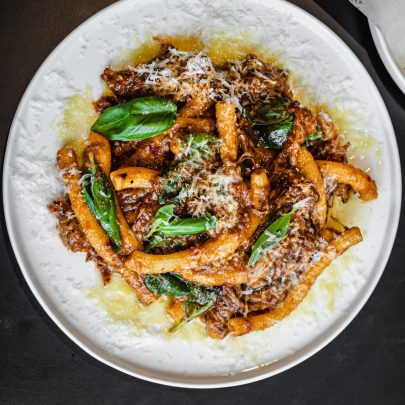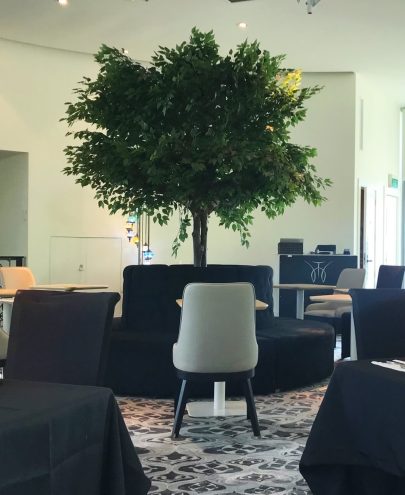Jan 19, 2023 Restaurants
In interviews about new restaurant Tokki , head chef and owner Jason Kim says he wants to show people that Korean food is more than just fried chicken and plates of cheese-covered meats sizzling in gochujang. He describes Gochu , the Commercial Bay restaurant he co-owns and was until very recently the head chef of, as “entry-level”. “Korean cuisine is not just strong flavours and cheap and cheerful. Traditional Korean is more subtle and elegant. It’s about highlighting beautiful produce and the flavour and freshness of ingredients and not messing around with it too much.”
I don’t think that Kim necessarily means to look down upon the bubbling stews and sizzling plates that are well-known (and beloved) in Korean restaurants here. But there’s an understandable frustration that happens around many cuisines in places the cuisine is not native to — a select few dishes become representative of an entire culture. Which is a shame, when there’s obviously so much more of it to offer. If you want a more diverse understanding of Korean food, I recommend the North Shore. I like Jami, which oft en has specials on, like gejang (raw marinated crab) and dak juk (Korean porridge); Jung Dam, where I usually order the seafood sujebi; Sam Gop, which specialises in gopchang (beef intestines); Zoomak, which serves braised pig feet with spicy snails; SongDo 송도식당, the local I’ve been going to for more than 10 years, which has a great gamjatang (pork backbone soup); and Kang Chon, which has the best jjamppong in Auckland. And that’s only a handful, of many.
Kim’s parents own a Korean restaurant on the Shore, too: Yummy Korean BBQ on Mokoia Rd in Birkenhead, a tiny place where you sometimes have to shout into the kitchen to let the owners know you’re around; the type of restaurant with pictures of customers on the walls. I wrote about eating there once in a Metro Eats newsletter, describing the kindness of the owner, who stirred in the perilla powder of my gamjatang for me. Kim messaged on Instagram a few hours later to let me know that the owner was his dad. Tokki (meaning rabbit in Korean) is, in a continuation of tradition, also on the North Shore. It has taken over a site that has been many things in a short period of time — restaurants in this part of town can struggle and, compared to close-by Sunnynook and Wairau Valley, Milford is pretty white — but most recently a Chinese-fusion joint.
It’s busy on our visit, though. Designed in partnership with Kim’s architect brother, Nick, its main features are the slatted wooden bar where you can watch Kim finish his plating, and a long series of tables running along the opposite wall, with dark teal banquette seating. Tucked underneath the curve of the bar is a fully stocked whiskey trolley, wheeled around to diners for a post-dinner drink and chocolate petit fours, housed in an ornate lacquered box. It is sparse but it does what it needs to.
Oddly, the “house menu” (chef’s choice) has a fair few dishes on its side that aren’t available in à la carte, though they are available “upon request” to guests, our server explains. This ring-fenced-off exclusivity is a way of making the option more special to diners, which must work, because we order it. The house menu is mostly drip-fed in bites, so you focus on just one or two things at a time. There’s a fine-dining quality to Tokki’s rhythm and reasoning, which seems about right considering Kim’s background (he was previously at The Grove , Sidart , Clooney), but it works even without sheets of gel or flowers involved, simply leaving a more room to appreciate each course for what it is. Or maybe the tactic is to get me so starved that each bite is like a flavourful salvation to my hunger. (There was more than a little part of me that wouldn’t have minded just eating a large portion of pork jowl and tteok-galbi for dinner with a side of rice.)
The first little snack — a curled-up seaweed tempura — effectively conveys the type of food you’re going to be eating in the following hour: refined, pretty, salty, crunchy. It tastes like a prawn cracker. Then comes the actual seafood; two slices each of raw snapper (hwe), overlaid with a creamy acidic mustard sauce and a dusting of finely chopped minari.
I really like eating ssam (쌈), where you place meat in cups of lettuce and wrap them up into a parcel. At Tokki, rice and pork already come cradled in palm-sized lettuce leaves, topped with oiji (pickled cucumber). I could easily eat three of these in quick succession — the pork has a delicious smoky character from the coals, the type of flavour that can lift a dish from boring nothingness. It was the same with a sticky glazed hunk of eggplant that was doused in soy: could have been boring, except for the audible crunch on the outside that yielded to a soft , pliable mush (and I mean that in a good way).
One of my favourites of the night was the mung bean jijimi, a kind of prawn-on-toast number where the jijimi (usually a pancake, but here a croquette) was crispy and moreish, substantial enough to stand up to the tofu-creamed prawn. Again, I could easily have eaten three. On the other end of the scale, the flat noodles should have been a stand-out but I think they were served at the wrong time of the evening (at the end). The noodles themselves were silky smooth and glossy with chilli-spiked sauce, but the strands were so salty that I needed to chase them up with a forkful of the sesame-dressed salad immediately.
The ‘mains’ were pork jowl, sliced thinly and covered by strips of garlic chives, best eaten with the radish kimchi; and a wagyu tteok-galbi with grilled rice and egg yolk, alongside a white kimchi (made without gochugaru). The pork jowl, a cut of the cheek, had that fatty melt-inyour-mouth quality, an indulgence that is cut through with sharp kimchi. I found the grilled rice — shaped like the white of a hard-boiled egg with a real egg yolk cradled inside — absolutely delightful, although it was not an easy component to split between two. Food here had a thoughtful give and take; a balance where there was always some sort of acidity, a gentleness, and a saltiness. Though presented and packaged slightly differently to what we might be used to, the flavours are very obviously Korean: the ferments, sesame oil, vegetables, herbs, pastes are all recognisable. Nothing feels out of place.
The house menu finishes with a s’more — a marshmallow that you rotate for Kim to char with his blowtorch. The sweetness gives way to a cube of Melona, which I ate oft en as a kid, grabbing it out of the freezer aft er school at the Asian supermarket that my mum went to shop at. This, too, made sense with the rest of the meal: it felt a little personal, honestly, as the whole restaurant did. Tokki got its name because Kim was born in the Year of the Rabbit. Every part of it seemed like it was coming from a single mind — whether that’s true or not, I don’t know. But the important thing is that the diner feels it. And we do.
Tokki ****
Address 87 KITCHENER RD, MILFORD
Contact 09 488 0888
Hours TUESDAY–SATURDAY 5–10PM
Dinner Bill HOUSE MENU $75PP; À LA CARTE $7–$29






